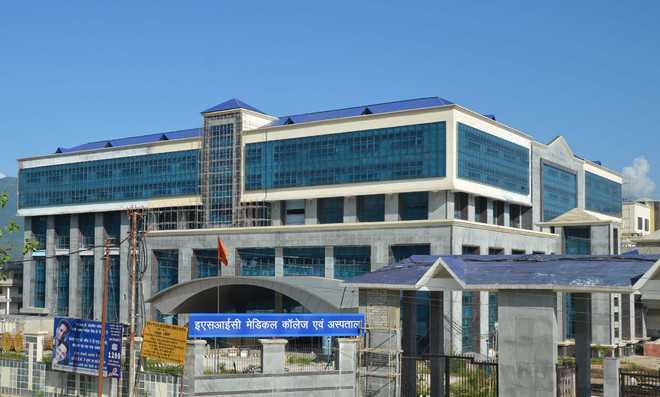Kuldeep Chauhan
Tribune News Service
Shimla, July 4
Finally, the state government has taken over the ESIC Hospital and Medical College at Nerchowk near Mandi. It has sought the Medical Council of India’s approval for starting the first batch of 100 MBBS students from the next academic session (2017).
Principal Secretary, Health, Prabodh Saxena on behalf of the state government, ESIC regional director Ashok Chandra and its senior state medical commissioner Dr Gunjan Gupta today inked an MoU in the presence of Chief Minister Virbhadra Singh, Health Minister Kaul Singh Thakur, Rural Development Minister Anil Sharma, Chief Secretary VC Pharka and other officials.
After signing the MoU, Kaul Singh said, “The state government pursued the matter with the Centre. We have sought the medical council’s permission to start the college from the 2017 academic session. The ESIC has leased out the college for 99 years. It has demanded 10 per cent seats in the college while the remaining will remain with the state.”
The minister said: “We are now focusing on hiring the faculty and equipping the college.”
The state has agreed to refund Rs 285.23 crore to the ESIC in five annual instalments beginning after two years. “The ESIC medical college has spent Rs 924.82 crore so far,” Kaul Singh said.
The medical college has 500 beds, 40-bed casualty department, one major OT and two minor OTs attached to the emergency. The hospital is equipped with 12 modular operation theatres with the facility of auto-transfer of medicines, injections, samples from store to wards and operation theatres with the help of the laser system.
The ESIC medical college was expected to start in 2012. But due to change of guard at the Centre in 2014, the ministry refused to run the college, pushing the Rs 924.82 crore project towards uncertainty.
This led to a blame game between the Congress and the BJP governments with no signs of solution till the state government took a call deciding to run the medical college.
Officials said the four-blocked college complex had a library, a five-storey administrative block, a nursing college and seven museums. It also had 371 residential units for the faculty, 300 rooms in the boys hostel and 200 in the girls hostel. The medical college also houses a resident doctors’ hostel, an interns hostel and a nursing hostel. It also has a sarai for patients, a gym, an indoor badminton stadium, a small shopping complex and parking.
Unlock Exclusive Insights with The Tribune Premium
Take your experience further with Premium access.
Thought-provoking Opinions, Expert Analysis, In-depth Insights and other Member Only Benefits
Already a Member? Sign In Now










